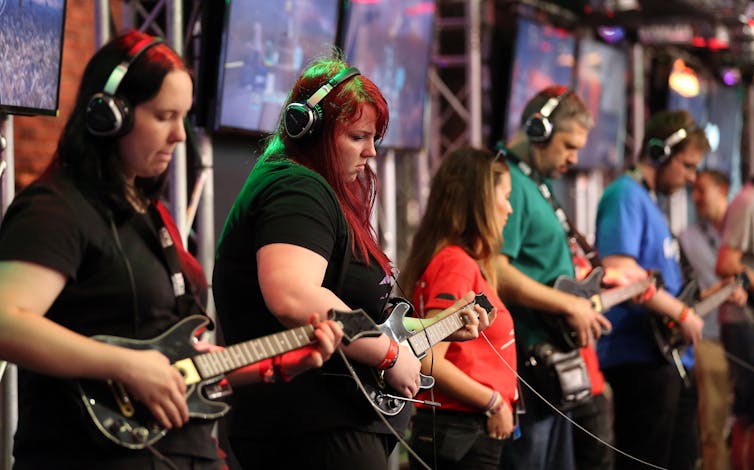The traditional completion of a comfortable living room sanctuary was a book or romantic comedy, but now consumers are turning to their Nintendo Switch or laptops for the soothing routine of low-pressure and high rewards gaming.
The term ‘Cozy Gaming’ encompasses games such as Animal Crossing: New Horizons, Stardew Valley, The Sims, and Spiritfarer, which are commonly associated with the concept of comfortable, low-stress gaming.
Popularity of ‘Cozy Gaming’ has been amplified by the pandemic, but its origins can be traced back to some of the gaming industry’s earliest digital titles. Its influence has been substantial, not only influencing the types of games being created, but also challenging longstanding misconceptions about gamers.
Cosy games are characterized by what they lack. Unlike traditional games with intense challenges and high stakes, cosy games eliminate the concept of winning or losing and instead prioritize player enjoyment and personal creativity as the main objective.
In Stardew Valley, players manage a farm, and the game doesn’t have a defined endpoint. It only concludes when the player decides to stop playing. For those who have invested countless hours into the game, it remains uncertain when that time will arrive.
A Legacy of Coziness
Cosy games gained widespread recognition during the COVID lockdowns, with celebrities such as Elijah Wood and President Joe Biden playing Animal Crossing in 2020. However, the roots of these games date back several decades.
Animal Crossing: New Horizons was released in 2020, but its predecessor, the original Animal Crossing, debuted in 2001.
Stardew Valley, a game inspired by Nintendo’s 1998 release of Harvest Moon, was released in 2016 and initially developed as a means for the designer to enhance their programming abilities. The life simulation game The Sims was first introduced in 2000.
Given that cosy games have existed since 1998, what accounts for their recent rise in popularity?
Cosy gaming’s popularity may be attributed to its evolution or rebranding of long-standing gaming styles.
In 2004, game designers Robin Hunicke, Marc LeBlanc, and Robert Zubek referred to relaxing gaming as ‘submissive’ gaming (which was later rephrased as ‘abnegation’ by James Portnow, another designer).
Submissive or ‘abnegation’ gaming involves games that are either so familiar that they require minimal effort to play, or so demanding that they provide a form of mental escape from the real world. Both styles allow players to adopt a ‘zen’ state of mind, freeing them from the stress of their daily lives.
The concept of submissive gaming was not widely known in 2004, and was mostly associated with the type of addictive gamers found in Japanese arcade centers.

Therefore, by 2010, with the rapid rise in popularity of the Nintendo Wii and mobile gaming, researcher Jesper Juul used the term ‘casual gaming’ to describe the players of these newly popular types of games.
The Emergence of the Cosy Gamer
As a video game expert, I believe the delay in the popularity of cosy gaming cannot be solely attributed to the pandemic. The key factor is the increasing recognition of this new type of gamer and the availability of platforms that foster a sense of community among these players.
For instance, Gaming Influencer Cozy Gamer Kat regularly streams gameplay for extended periods on Twitch, and often posts hour-long highlights of her gaming sessions on YouTube.
Despite her expertise in cosy games, Kat is also highly skilled in challenging titles such as Zelda: Breath of the Wild.
Cozy Gamer Kat may not be as well-known as Vixella or Sachie, but her commitment to creating welcoming environments in the gaming world sets her apart as a noteworthy player in the development of the gaming community.
What distinguishes this era of cosy gaming is not the games or the players, but the platforms that have facilitated the formation of this community.
With the help of live streaming, individuals who do not conform to the typical gamer stereotype can now be part of a bigger gaming community.
